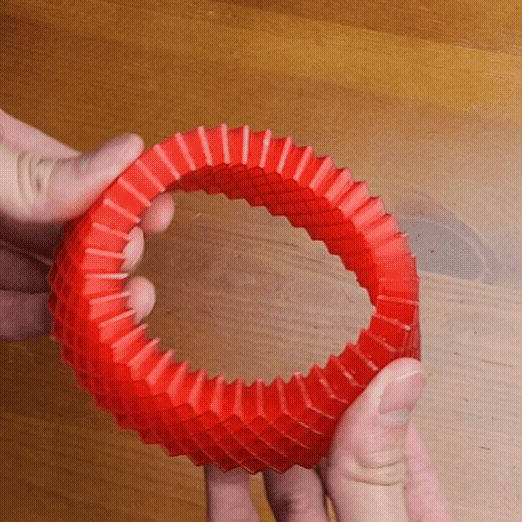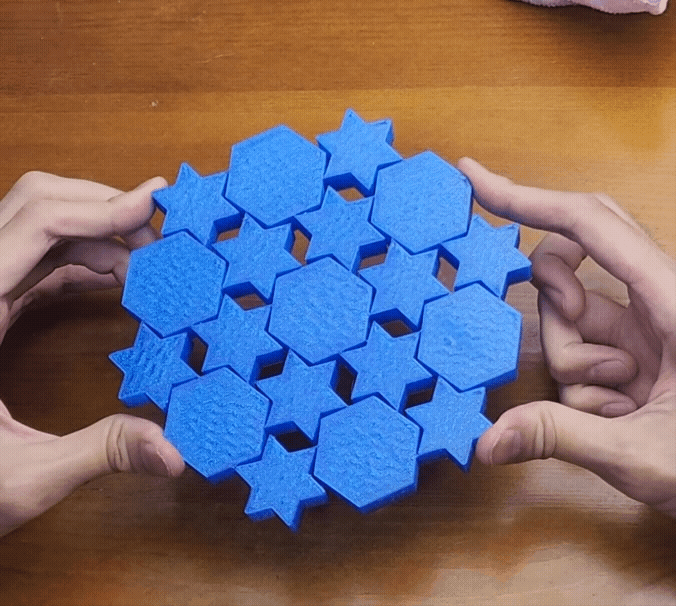
Introduction
Since purchasing a 3D printer, I have created the structures I envisioned in real life with relative ease, even though I am clumsy with my hands and not good at detailed work. In particular, planar folding structures made of flexible material (TPU) are enjoyable because it is easy to design, and I can immediately give shape to what I have in mind.
In this page, I will summarize my efforts in 3D printing using TPU. I will add to this page as soon as I make something new.
Hinged tessellation
A tessellation is a laying out of a plane with shapes. A hinged tessellation is one in which, in addition to laying out shapes, those shapes are hinged together and can rotate.
Square hinged tessellation
This is the most basic hinged tessellation. The squares are connected by a hinge and move with one degree of freedom. This time, I 3D printed each square with an arrow attached to it. It is easier to see the rotation, and the direction of the arrows become aligned or alternate before and after the deformation.
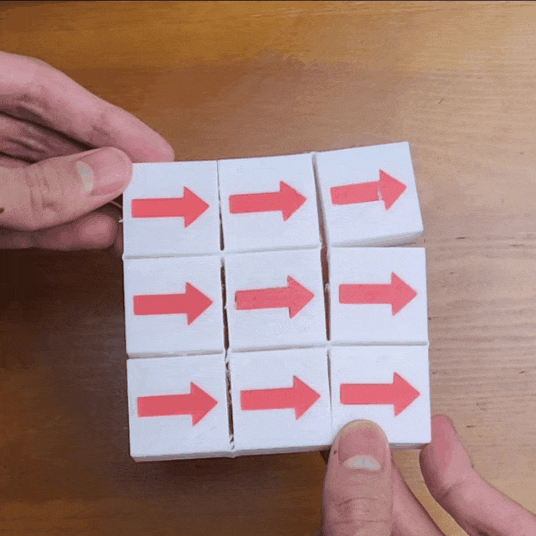
Variation of square hinged tessellation
I noticed that a square hinged tessellation can have each edge replaced by a single curve if the position of the vertices is fixed. The image below shows an animation created with GeoGebra that replaces each edge of a square with a single Bezier curve, which can be deformed in real-time by moving the two black control points.
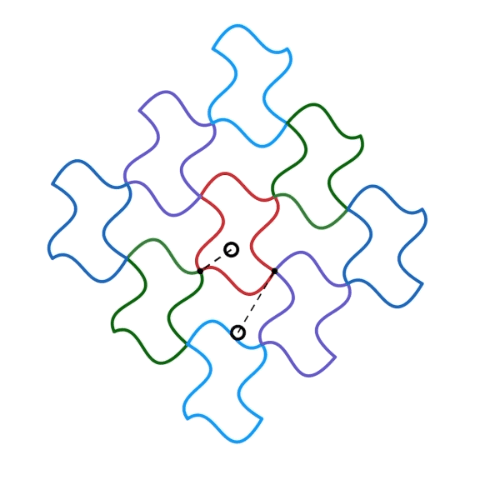
I 3D printed some hinged tessellations obtained by edge replacement.
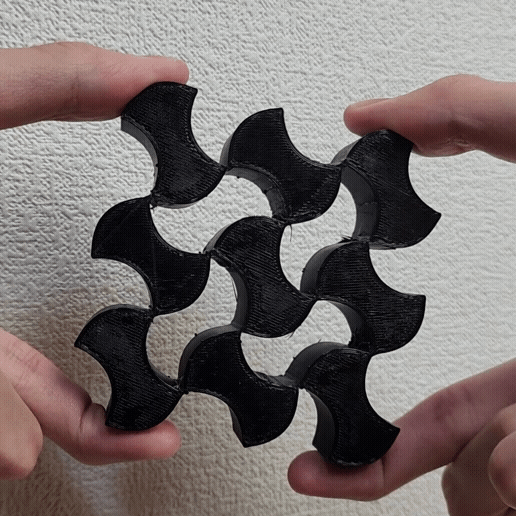
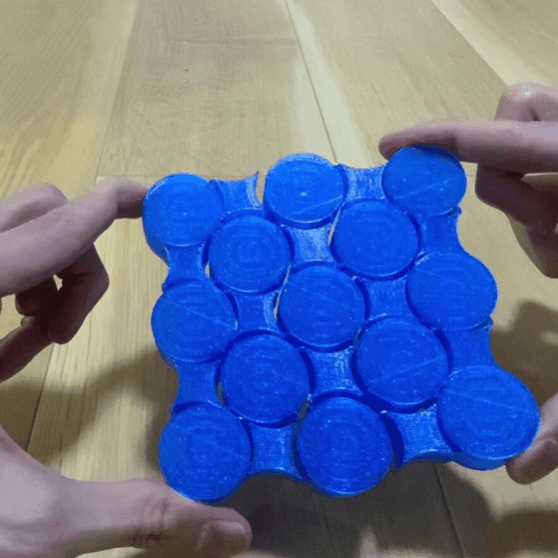
Hexagon hinged tessellation
I put hinges on regular hexagon tessellation (honeycomb structure)

Star and regular polygon
Hexagram and regular hexagon
This structure consists of hexagrams and hexagons

Pentagram and decagon
This structure consists of pentagrams and decagons. Similar to the hinged tessellation we saw earlier, but this pattern cannot fill a plane.
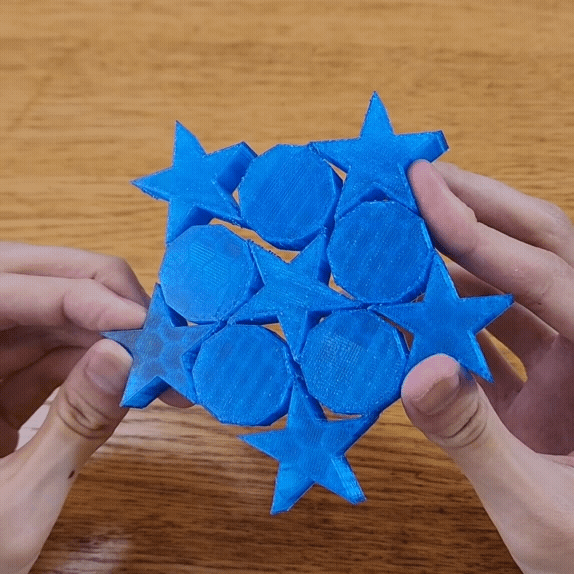
I considered extending this structure to a dodecahedron. The dodecahedron consists of 12 regular pentagons. Each face of the dodecahedron is replaced by this pentagonal planar mechanism and connected with a joint at each vertex of the dodecahedron. This structure should have 1 degree of freedom. First, I created the animation using Grasshopper.
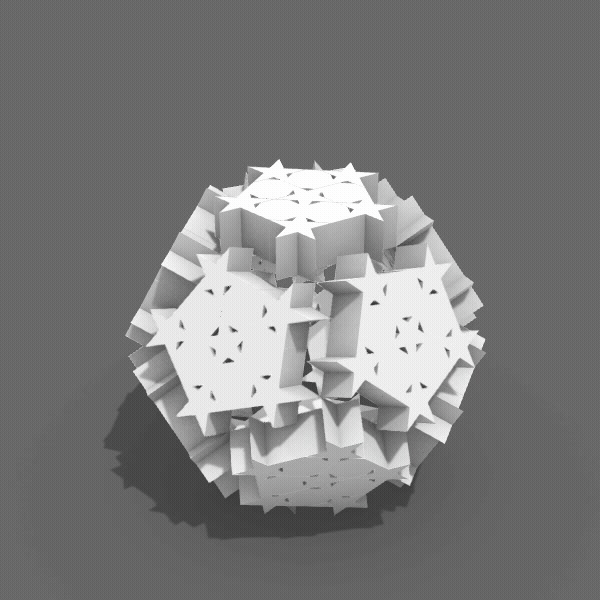
Actual 3D printing. I drilled five holes in the pentagram structure and secured it with joints and ties. Although I am somewhat satisfied with the result, I intend to improve it to move more smoothly.
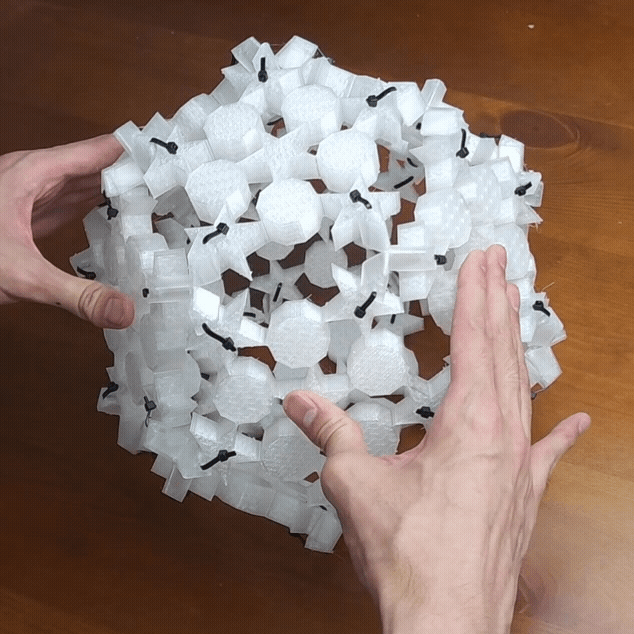
Others
1
It is a deformation structure consisting of two figures: equilateral triangles and four equilateral triangles in a row.
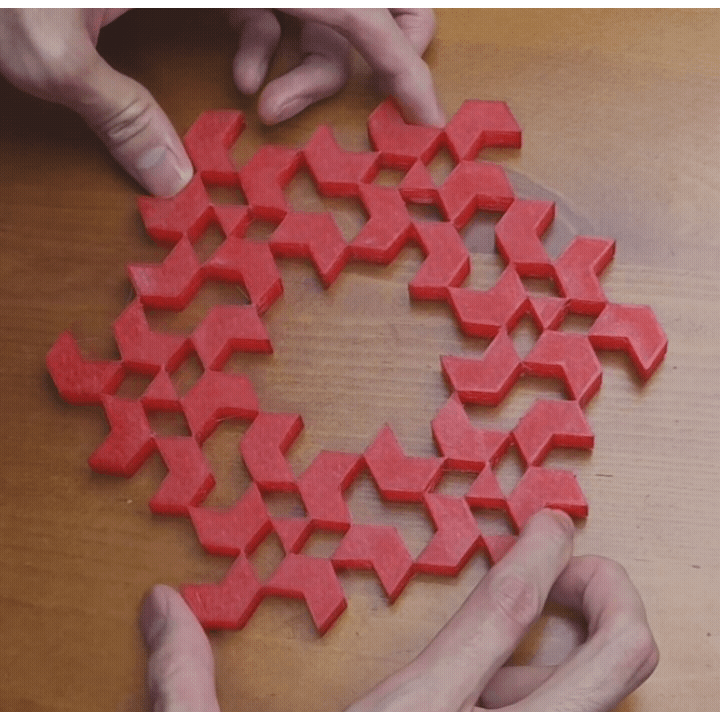
2
The structure is like a grid arranged in a band. I didn’t anticipate any action before I created it, but it was just something I 3D printed. You can play with it by turning it upside down.
